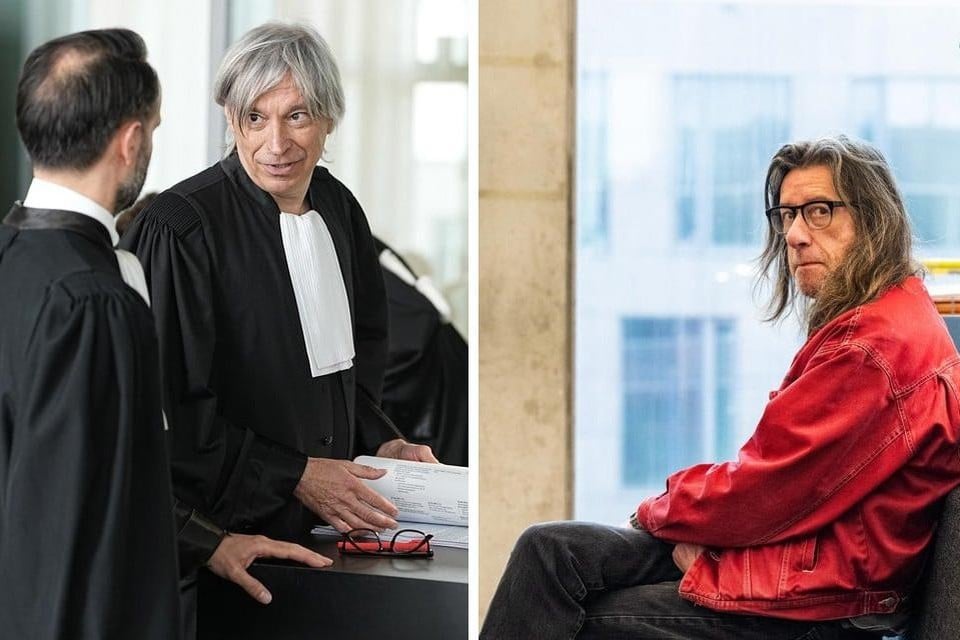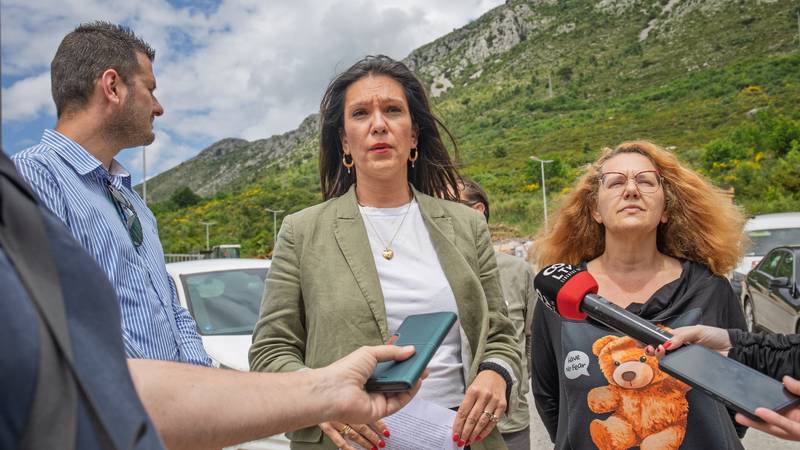SVT’s « Sweden and the war » collect memories from the Swedes

Was Sweden too fast to obey Germany? Did we betray our neighboring countries, or was it lucky for them that Sweden managed to stay out of the war? How did the Second World War affect the Swedes? These are issues that have been discussed among historians ever since the Second World War ended. Now SVT’s new TV series « Sweden and the war » will give viewers a chance to form their own view.
– It is teeming with films about World War II, but Sweden and World War II are not so told, says Kristina Lindström.
She is a journalist and filmmaker, since 1994 at SVT and has among other things made the documentaries « Palme » and « Astrid ». Kristina Lindström has worked in close collaboration with producer Henrik Stockare, even he has worked at SVT since the 1990s.
Now they sit a bit like on needles through the interview. DN has taken them to the Army Museum to photograph in an environment with war clutch, but they really need to be back on SVT to put the final hand on the series. When we see, only two sections are completely clear and approved by factual historians. The other three are on the right track, but the first episode will be broadcast already on May 11, timed with this week’s 80th anniversary celebration.
« Sweden and the war » will seen As a second part of SVT’s ongoing history initiative, which began with « the story of Sweden ». When SVT had decided that Kristina Lindström and Henrik Stockare would make the documentary series, they went out with a call to the viewers about submitting their own memories from the war: diaries, letters, photographs and films.
– The series’ idea is that we are in the present and move forward chronologically. We did not want experts who sat and analyzed. That is why the letters and diaries are so good. Because they are written down that day, the one who writes does not know what will happen then, says Kristina Lindström.
– What we had not imagined was that there would be 3,000 answers!

A single answer Could also contain a collection of 600 letters, photo albums or cartons with lists of train times. It simply became a tough job to go through all the material. Together, they were an editorial staff of about twenty people who helped cataloging, finding the interesting stories and arranging them chronologically.
The editors looked up five large whiteboard boards and a bundle of post-it notes in different colors.
– We patched just about all events. Important people. Great events in the war. Major events in Sweden. Important people in the war. Important people in Sweden. Small stories. Everything. People. Thousands of patches in different colors. And it is with a little sadness that you can look at them: what did it really pray? Henrik Stockare asks himself.
– The most difficult thing has been to make the selection. One can get stuck in absolutely wonderful Storieswhich you have to release after all. Because they do not bring the story forward, says Kristina Lindström.
– What we have used most is these incredible films that have come in. And there are movies that never anyone but may have seen a family, which has been caused and then never looked at. It is materials that have never been shown to a larger audience, says Henrik Stockare.
In several cases document The private films also the great historical events. One example is the Swedish diplomat Sven Grafström, known for the notes he made from the Swedish embassy in Warsaw when Germany invaded Poland in September 1939.
– We knew we wanted to use his diary. And when I read it, I saw that he writes in one place: « I went up and on the roof and took a film photography. » And so I thought, has he filmed this? I started to check if there were any survivors. And then he has a son who lives. He said, « Yes, I have those films. » It is absolutely fantastic that you follow the diary and at the same time see what he has filmed, says Lindström.
The editors have also conducted 120 interviews with people who have submitted their stories. It has in many cases been at the last moment.
– Twenty of those we have interviewed are no longer with us today. And in five years there may be 30 percent left, and then everyone is away who actually participated and experienced this, says Stockare.
– It has happened several times that we understand that people really want to tell even though they have been weak. One of them, in Denmark, said, « I’m probably not living in two weeks. » He did this interview and then he died. So it has really been the last moment, says Kristina Lindström.

The documentary films has first been treated by SVT’s own scan department which made the image quality as good as possible. Then they were handed to an external company that colored images digitally. After that, sound effects and music have been added to the pictures.
The films almost look like they were recorded today and the 1940s no longer appear so remote. Kristina Lindström and Henrik Stockare are aware that SVT risks being criticized for changing and embellishing the cinematic documents.
– It’s something we’ve talked about a lot of course. Because, on the one hand, collection makes the films come to life and we get closer. At the same time, it is always a problem. You can discuss where the boundaries go, says Lindström.

I ask about Work on the series changed their view of the war. Henrik Stockare mentions the debated Swedish remission policy, which was based on Sweden to be sufficiently cooperative with the Germans so as not to be invaded.
– That strategy is horrible in many ways, but at the same time it keeps us outside the war. But that we lie there as a small neutral island also means that our neighboring countries have somewhere to escape.
Kristina Lindström says that her grandfather in Landskrona helped people escape from Denmark and she herself grew up in western Värmland where she heard many stories about what took place at the border with Norway.
– What happens when you put together these different fragments chronologically is that you see the whole, that everything gets a context, she says.

They have both known That today’s conflict -filled world with Russia’s invasion of Ukraine, aggressive American foreign policy and threatening trade war has given a dark contemporary fund to work on the World War II series.
– The longer we have worked, the closer the events of our time have come what we are trying to describe. None of us have lived in such a dramatic time, says Stockare.
They have chosen to start the series with the wonderfully sunny in the summer of 1939, mentioned by many of those who submitted their memories.
– The war really has no outbreak date, but it is a process that was initially invisible to people then. Does it start after the First World War and Peace in Versailles? Or with the dark concessions of the 1930s for the dictatorships in Germany, Spain and Italy? When does it start?
Read more:
Sven-Eric Liedman: No country has ever equipped itself to peace










